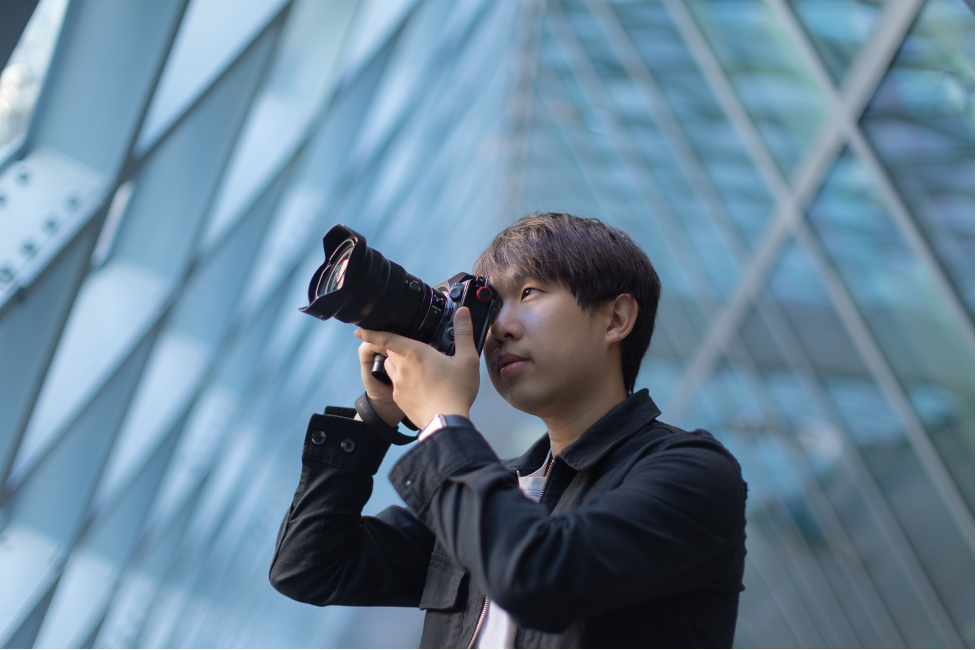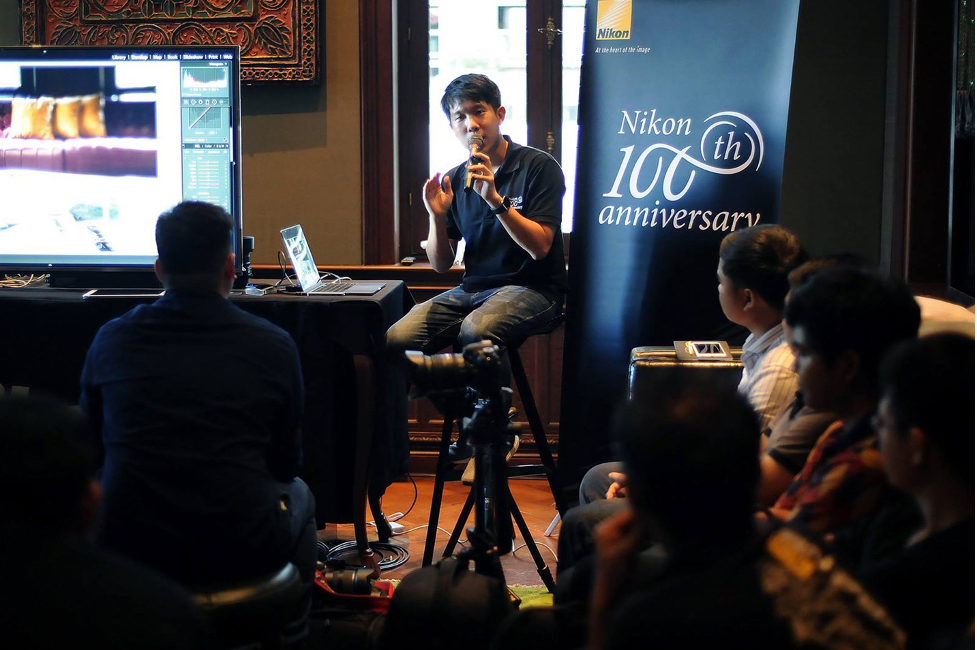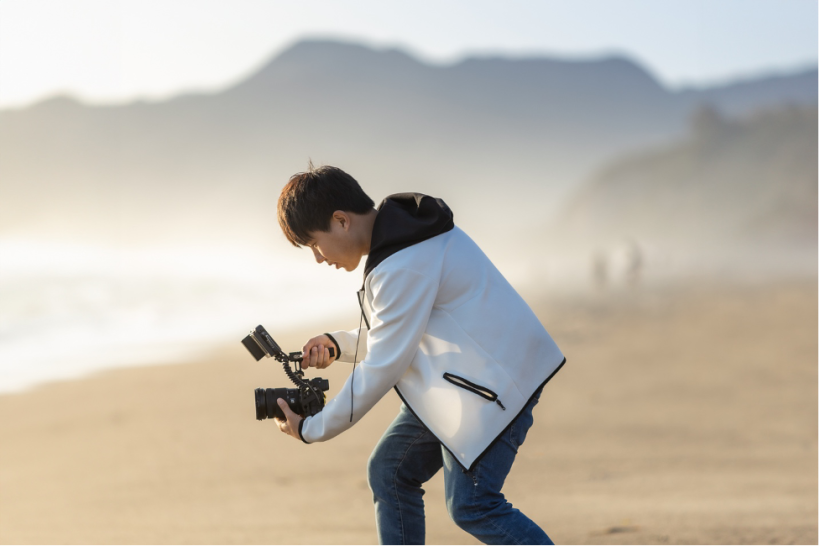Peeradon Ariyanukooltorn’s journey into the realm of photography is as multifaceted as it is inspiring. It began with an interest kindled during his university days and grew into a blazing passion that skillfully merges the principles of architecture with the artful eye of a photographer.
Educated at the prestigious Chulalongkorn University in Thailand, where he led the university’s photography club to new heights, Peeradon’s academic endeavors provided him with a foundational expertise that he has artfully pivoted into his photographic career. Further honing his skills at UCLA Extension, he embraced cinematography, expanding his visual storytelling into motion pictures.
His professional life is a testament to his talent and dedication, with experiences that span top real estate companies in Thailand to global brands like Nikon. His accolades, most notably the International Photography Awards (IPA), evince his standing on the international photography stage.
Peeradon’s highlights reflect the capability of a true artist who possesses a unique style and extensive expertise in both photography and cinematography.
Peeradon, your background contains a seamless merge of architectural knowledge with photography. How do you feel your education in architecture has influenced your perspective as a photographer?
Certainly, my education in architecture has played a pivotal role in shaping my perspective as a photographer. I consider myself fortunate to have pursued architecture as my field of study. This background has made my photographic style unique among my peers, ultimately becoming a hallmark of my work. The deep understanding of design principles and spatial awareness acquired through my studies in architecture has profoundly influenced my approach to photography.
During my student years, I engaged in extensive research on remarkable architectural projects worldwide. This exploration introduced me to numerous photographs of these structures, teaching me the importance of choosing the right angles to effectively showcase spaces. This experience not only enhanced my visual awareness but also instilled a keen sense of how to represent architectural elements in a compelling and aesthetically pleasing way.
Moreover, the inclusion of photography workshops in the architectural curriculum was invaluable. These workshops allowed students to visually express their understanding of art elements and design fundamentals through photography. This practical approach was crucial in refining my photography skills, offering a tangible application of theoretical knowledge during my academic journey.
An additional benefit of my architectural background is a profound understanding of 3D space and perspective. This expertise is particularly beneficial when using an ultra-wide-angle lens, which can introduce significant distortion if not handled precisely. My familiarity with architectural principles enables me to effectively manage this potential distortion, ensuring that my photographs maintain a balanced and accurate depiction of the spaces I capture. Ultimately, my education in architecture has not only deepened my appreciation for design but has also laid the groundwork for my distinct approach to photography.
Having transitioned from photography in Thailand to the global stage, what differences have you encountered in audience reception, and what universal qualities do you believe your work communicates?
It has been a rewarding experience, unveiling distinct differences in audience reception while highlighting the universal qualities of my work. A significant distinction is found in the approach to architectural photography. In the US, many designers prefer using flashes to enhance atmospheres, whereas in Thailand, the focus often lies on making the most of natural light conditions and selecting the optimal moment to capture a space. This contrast has expanded my perspective, enabling me to explore the nuanced art of light setup more deeply and adjust my techniques to meet the preferences of diverse audiences.
Globally, there’s a pronounced awareness and understanding among clients about the importance of photo licensing, an aspect that might sometimes receive less emphasis in Thailand. In some cases in Thailand, budget constraints for photographers capturing architectural works can limit the appreciation of photo licensing’s significance. Conversely, the international audience tends to place greater importance on licensing, underscoring the value of intellectual property rights in architectural photography.
Regarding the universal qualities in my work, maintaining a consistent style has been crucial for achieving acceptance worldwide. While some photographers might dramatically alter their style to follow trends, I have steadfastly maintained my unique approach over the years. This dedication to a specific style has been beneficial, as demonstrated by winning third prize at the International Photography Award (IPA) in 2022. This accolade has strengthened my conviction that my photography style holds universal appeal and resonates positively with audiences across the globe.
Could you take us through the thought process and preparation involved in capturing award-winning shots like the one that earned you the 3rd prize at the International Photography Awards (IPA) 2022?
The award-winning photograph that earned third prize at the International Photography Awards (IPA) 2022 was the culmination of a unique confluence of events and careful planning. In 2020, against the backdrop of a politically charged atmosphere with protests spreading across Bangkok, photographers from press members to enthusiasts eager to capture this historic moment converged on the scene. The iconic Victory Monument, a well-known landmark situated near my home, became a focal point, offering a sense of familiarity and connection.
In contemplating the scene, I considered various potential vantage points around the landmark that could capture the protest’s essence. I ultimately chose what I believed to be the best angle to highlight the event’s significance against the iconic Victory Monument backdrop.
The protest’s timing was fortuitous for a cityscape photographer, occurring during the cherished “blue hour,” about 10–20 minutes after sunset, when the city is enveloped in a mesmerizing light. This natural lighting, coupled with the poignant moment when the mob leader directed the crowd to light up the area with their phone flashlights, created an unforgettable scene. The convergence of these elements at the perfect time added a layer of distinctiveness and emotion to the photograph.
Given the rapid pace of the unfolding events, including the changing light conditions and the initiative with the flashlights, the primary lesson was the importance of capturing the moment. Drawing on years of experience, I executed the shot with a carefully selected camera setup to avoid any errors in capturing this dynamic scene.
As a cityscape and architectural photographer, the composition of the shot effectively turned the protest into a cityscape image, featuring a crowd and embedding it with a historically significant narrative. This blend was impactful, generating widespread resonance on social media and receiving a positive reception. Encouraged by this feedback, I recognized the photograph’s potential to stand out and be acknowledged, leading to its deserved recognition at the prestigious IPA awards.
As a multifaceted visual artist, how do you balance the roles of photographer, retoucher, and colorist, and how do these disciplines inform each other in your work?
It’s a seamless process, rooted in a shared appreciation for aesthetics. The commonality across these roles is my genuine love for capturing and enhancing the beauty of images. Whether I’m creating, shooting, or refining visuals, my motivation is driven by a passion for crafting beautiful compositions.
In smaller-scale projects, merging these three roles into one person offers a comprehensive understanding of each step in the creative process. This hands-on involvement acquaints me with the nuances of the workflow. As projects expand and involve more individuals, I have the flexibility to select the specific role I wish to assume. Thus, whether I’m behind the lens, retouching, or perfecting colors, each aspect enhances my overall enjoyment of the production.
Navigating these roles introduces a dynamic experience. As a photographer, I assume the leadership role at the start of production, with the roles of retoucher and colorist following. Constantly leading can be demanding, and at times, working in the background can feel isolating. Yet, this fluctuation between leadership and collaboration naturally balances my working style, offering a comprehensive and varied perspective on the creative process.
Furthermore, having filled all these roles individually on entire projects has given me a unique insight into the specific needs and expectations of photographers, retouchers, and colorists. This knowledge allows me to efficiently bridge the gap between these roles. I understand what photographers expect from retouching and what retouchers need from photographers. This dual perspective not only encourages effective communication but also smoothens the workflow, making the entire creative process more efficient and cohesive.
Given your notable recognition by Nikon, what qualities do you believe this brand seeks in a photographer, and how does your work align with their expectations for high-profile events?
Being associated with a renowned brand like Nikon comes with a distinct set of expectations, especially given Nikon’s focus on catering to professional photographers. Nikon’s user base largely consists of professionals, and the brand has built a reputation for offering an unparalleled product experience and flexibility tailored to the needs of specific photographer types. Although Nikon may not match its competitors in quantity, its commitment to quality and focus on the professional market have made it an industry leader. However, Nikon has made a conscious effort to challenge the perception of being exclusively for professionals by making its products more accessible to a wider audience, including beginners and younger enthusiasts.
Nikon Thailand took an active step towards engaging the younger generation with the Nikon Youth Team campaign, which highlighted younger professional photographers, including me, using Nikon equipment. Nikon is evolving its strategy to ensure that its products are seen as suitable not just for seasoned professionals but also for emerging talents and enthusiasts. My association with Nikon began during my student days when I sought event sponsorship. As my work gained recognition and visibility online post-graduation, Nikon reached out, leading to an ongoing relationship. This is part of Nikon’s wider effort to include young professionals who have shown excellence in their fields.
Metaphorically, Nikon could be compared to a perfectionist—one who doesn’t speak until fully confident in what they have to say. This careful approach may slow things down, but it guarantees a level of certainty and reliability. For me, Nikon has been a dependable tool in my work, always delivering on its promises and never failing at critical moments.
From my perspective, Nikon’s criteria for selecting photographers extend beyond mere skill. Rather than just looking for the best, they appear to appreciate individuals who can effectively communicate with the community and share their experiences, both in using Nikon products and in their overall work. This focus on a photographer’s ability to connect and engage fits with Nikon’s broader vision of nurturing a community that spans various levels of expertise and experience.

You mentioned your role in helping Nikon target a younger demographic through the Nikon Youth Team. What key messages or techniques do you emphasize when engaging with the next generation of photographers?
Engaging with the younger generation of photographers through the Nikon Youth Team required adopting specific key messages and techniques to resonate with their distinct mindset and learning preferences. Recognizing that this demographic often adopts a more systematic and reason-based approach, I focused on presenting information in a manner that aligned with their way of thinking. This approach was crucial for establishing a connection and gaining their trust.
Being part of a similar generation of photographers facilitated a natural connection with the audience. Serving as a tangible example of a young professional using Nikon equipment was a powerful testament to the brand’s relevance among the new generation of photographers.
In my engagement strategy, providing solid proof with reliable reasons was paramount. The younger generation typically demands substantial evidence and supporting statements to trust in a product or message. In my reviews and discussions, I ensured that every recommendation or thought was backed by concrete examples, such as showcasing photos I had taken or detailing my editing process. This method lent credibility to my communications and resonated effectively with the audience.
A key strategy was to avoid being overly educational in my interactions. Understanding the younger generation’s preference for content that isn’t overly serious, I strived to make my reviews approachable and easy to understand. This ensured the information was digestible and accessible to a wide audience, fostering engagement and interest.
Moreover, maintaining a connection with my university photography club community was crucial. By sharing my experiences as a friend rather than an instructor, I nurtured a sense of camaraderie and relatability. This personal approach helped bridge the gap between being an established photographer and connecting with aspiring photographers on a peer-to-peer level, creating a more conducive environment for learning and mutual support within the community.

Looking at your current project, ROCKET TOFU LLC, can you describe the vision you have for video production and how you integrate your broad skill set into this new venture?
ROCKET TOFU LLC, the company I co-founded with my friends, represents a vision that perfectly merges my technical expertise with my friend’s exceptional storytelling skills. This partnership was born from our shared recognition of the potential that matched our collective experiences working with major brands in Thailand. By combining our skills, we realized our capacity to manage high-end projects within the competitive media industry landscape in the US.
However, moving to a new country introduced its own set of challenges, notably starting from zero with no connections and establishing our presence in the market. Despite these obstacles, our complementary skills have proven to be like pieces of a puzzle that fit together perfectly. I am passionate about technical aspects such as file formatting, color correction, and system management, whereas my friends excel at creating compelling narratives and directing productions.
Working as a team in the US has been an enriching learning experience. Unlike my previous experience as a solo entrepreneur in Thailand, being part of a team has enabled us to distribute responsibilities effectively, making it easier to overcome challenges on set and scale projects efficiently.
Leveraging my technical skills, I have initiated the setup of an in-house system for ROCKET TOFU LLC, which has streamlined our collaborative processes. This includes the implementation of efficient task management systems and editing software collaboration, ensuring a smooth workflow that boosts productivity and enhances team communication. Integrating these technical solutions has improved our ability to deliver top-notch video production services and laid the groundwork for ROCKET TOFU LLC’s continued growth and success in the vibrant US media industry.
What do you think is the most compelling aspect of your work and story that resonates with both industry peers and a wider American audience?
The most compelling aspect of my work is my commitment to meticulously crafting each shot, ensuring that every photograph reaches its fullest potential. This dedication has become my signature, establishing my place in the realm of crafted photography within both the commercial and artistic fields. I intentionally distance myself from the documentary style common in press or editorial work, where time constraints often lead to a preference for speed over aesthetic refinement. For me, maintaining the quality of my work is paramount, as every piece bears my name, and I refuse to compromise on the attention to detail and precision that defines my craft.
In addition to my steadfast commitment to excellence, what resonates with both industry peers and the broader American audience is the recognition that Americans have a more acute sense of art appreciation and licensing compared to the Thai audience. Working in an environment where people deeply respect and value our work has been incredibly inspiring. This cultural appreciation acts as a catalyst for my creativity, motivating me to continuously seek improvement and innovation in my craft. The acknowledgment and respect for both the artistic and commercial aspects of my work by the American audience have been instrumental in advancing my career and enhancing my sense of artistic fulfillment.
Peeradon’s work unfolds as a true confluence of cultural perspectives, technical prowess, and artistic depth. It is an invitation to behold architecture and landscapes through the lens of someone who sees beyond mere structures and silhouettes to tell stories of magnificence and meaning.
For those in the market looking to collaborate with a visual artist who can conjure both the grandeur of architecture and the subtleties of light and shadow, Peeradon’s portfolio is a portal into what modern, comprehensive artistry can achieve. As he seeks to introduce himself more fully, Peeradon extends an invitation to explore his work, each image a testament to his remarkable craft.
It is not just an introduction to his talent but an entreaty for viewers to become part of the extraordinary vistas and narratives he brings to life. Visit www.zanyama.com to witness the visual stories crafted by Peeradon Ariyanukooltorn—stories that are not just seen but felt, not just observed but experienced
Laila Azzahra is a professional writer and blogger that loves to write about technology, business, entertainment, science, and health.
